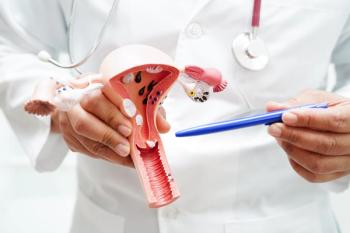
Obstetrics
Latest News

Latest Videos

CME Content
More News

Research highlights buprenorphine’s effectiveness and safety in improving outcomes for pregnant patients with opioid use disorder, urging updates to medical guidelines.

A new study finds that temporarily stopping tamoxifen to achieve pregnancy does not increase short-term breast cancer recurrence in premenopausal women.

Devon Ramaeker, MD, dives into the expansion of prenatal genetic testing, improvements in early diagnosis of anomalies, and patient education.

Review some of the top stories from the Contemporary OB/GYN website over the last week, and catch up on anything you may have missed.

According to Joy Windley, CLC, delayed follow-ups, lack of accessible resources, and limited support systems are leaving postpartum women vulnerable to serious health and emotional challenges.

A new study reveals the pandemic significantly worsened maternal death rates across all racial groups.

The BRITE-MOM study at UCSF uses wearable ECGs to detect arrhythmias in pregnant women, aiming to improve early diagnosis and maternal cardiac outcomes.

A large cohort study shows that buprenorphine treatment during pregnancy significantly lowers the risk of preterm birth, severe maternal morbidity, and neonatal complications in women with opioid use disorder.

A new study found that prolonged time between waking and eating in pregnancy is associated with increased calorie consumption and disrupted sleep patterns.

A new study shows the Stanford Obstetric Recovery Checklist is a valid, reliable, and responsive tool for assessing outpatient postpartum recovery at multiple stages.

Despite abortion bans in several states, a new study showed no significant shift in where OBGYNs choose to practice.

A UK study links maternal anemia in early pregnancy with increased congenital heart disease risk in offspring.


A new study found that cell-free DNA from routine prenatal testing can accurately identify preterm birth risk without added cost or procedures.

A new study links gestational diabetes and high blood pressure during pregnancy to higher long-term cardiovascular disease risk, especially among women with obesity.

A new study finds that digital behavior change programs do not significantly increase moderate to vigorous physical activity among women with a history of hypertensive pregnancy disorders.

A new study reveals a sharp rise in preventable pregnancy-related deaths across the United States, with significant racial, age, and state-level disparities.

Review some of the top stories from the Contemporary OB/GYN website over the last week, and catch up on anything you may have missed.

A recent study found that a simple RNA-based blood test can identify the risk of hypertensive disorders in pregnancy months before symptoms appear.

A new study reveals that emergency department nurses in abortion-ban states are not receiving critical guidance from hospital leadership, leading to confusion, moral distress, and compromised patient care.

New research suggests pregnant women are less likely to develop long COVID compared to nonpregnant women, offering insights for future treatment strategies.

A nationwide study in the Netherlands finds first-trimester ultrasound scans highly effective at detecting major congenital anomalies in low-risk pregnancies, offering earlier diagnostic insights.

Women with prior pre-eclampsia develop cardiovascular (CV) risk factors nearly a decade earlier, prompting calls for earlier and regular CV screening.

Discover key strategies OB-GYNs can use to protect pregnant women from severe COVID-19 risks and ensure healthier maternal outcomes.

New research reveals that both COVID-19 infection and broader pandemic-related stressors significantly impact pregnancy outcomes, including increased rates of preterm birth, low birth weight, and neonatal intensive care unit admissions.



















